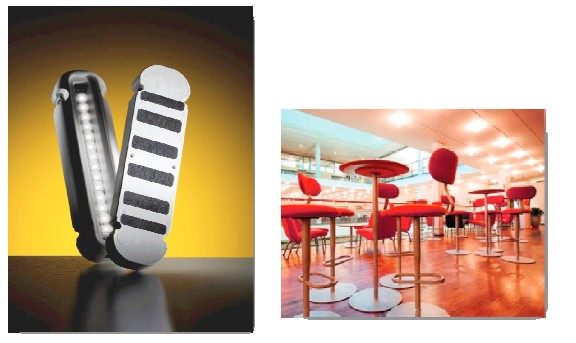PolyOne Corporation (NYSE: POL), a premier global provider of specialized polymer materials, services and solutions, announced that Finland-based Kruunutekniikka Oy, a leading manufacturer of solid-state LED lighting systems, has adopted Therma-Tech™ thermal management solutions to replace aluminum in its recently patented Coolics™ LED light fixtures. The PolyOne solution helps Kruunutekniikka Oy optimize its manufacturing processes and improve overall productivity.
“These metal-replacement solutions manage heat while also providing the design flexibility, reduced weight and processing ease of conventional thermoplastics, helping our customers reach their goals for manufacturing efficiency,” said Holger Kronimus, vice president, Europe and general manager, Engineered Materials Europe, PolyOne Corporation.
LEDs are a sustainable alternative to other lighting options, reducing energy usage because they are more efficient than both compact fluorescent and incandescent bulbs. In comparisons with these two lamp types, energy savings can range from 30 to 80 percent. While LEDs consume less energy and release less heat than conventional lighting devices, managing the heat generated by LEDs is critical to maintaining useful life and energy efficiency.
“This project is an example of how two innovative companies can work together to reach a great new solution,” added Kronimus. “Kruunutekniikka’s decision to replace aluminum with a polymer solution from PolyOne is a win for the company and for its customers, who benefit from LEDs that weigh less than comparable metal versions and can be formed into creative new shapes and designs.”
Therma-TechTM materials are increasingly being selected for use in thermal management components, including the socket, cooling heat sink, transfer pad and trim in LED lighting fixtures.

CAPTION: PolyOne’s Therma-TechTM thermal management solution gives Kruunutekniikka the performance it requires for its innovative new solid state LEDs (left),which find use in architectural lighting applications such as streetlights, hospitals, train stations, and restaurants (right).












